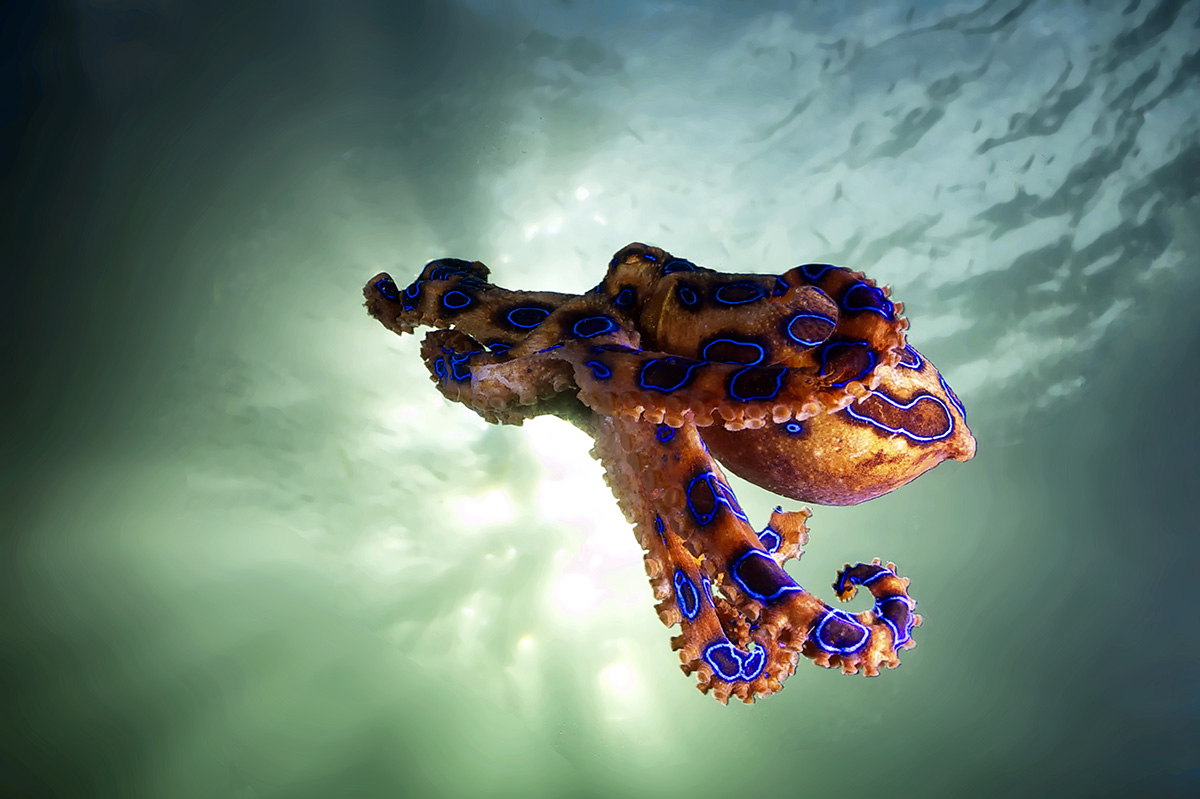Where Do They Live?
They live in tide pools and shallow reefs all around Australia.
Why Are They Dangerous?
They are one of the world’s most venomous animals. Despite its small size, the blue-ringed octopus carries enough venom to kill 26 adult humans within minutes. The venom is in their saliva and enters your system when they bite you. Their bite can result in paralysis and respiratory depression - stopping you from breathing.
Their bite is usually small but painless. Commonly the first signs you have been bitten will be numbness of the lips and tongue.
How to Avoid Them?
When exploring rock pools, look but don’t touch. The blue-ringed octopus is so small and well camouflaged that they are difficult to see as their rings only show when threatened. Don’t touch any small octopuses, they might be a blue-ringed octopus and by the time you see the telltale rings, it’s too late!
What to Do If You Get Hurt
Call 000 immediately. Apply a pressure immobilisation bandage to the bite site, if you’re not sure how to do this ask your patient to remain as still as possible. If the patient stops breathing commence CPR and continue until medical assistance arrives and is able to take over. Remember the venom causes paralysis and respiratory depression. The patient may survive if you can keep their heart beating until the poison wears off and they can start breathing on their own again. This can take between 2-13 hours.
